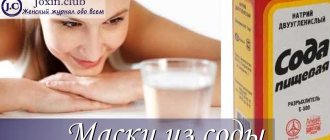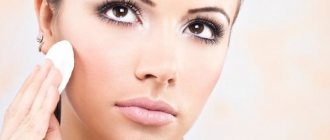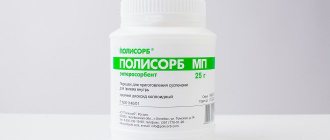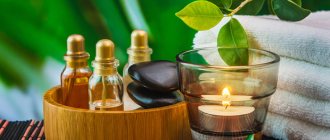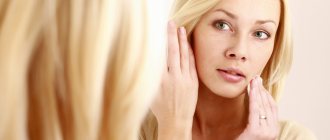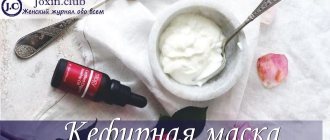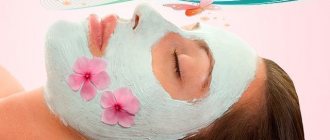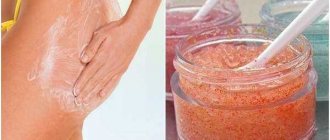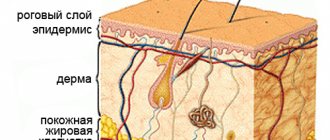Rashes on the face appear against the background of hormonal imbalance, unbalanced diet or lack of sleep. Blackheads and pimples are not just an aesthetic problem. With insufficient skin care, metabolic processes are disrupted, and the infection spreads to the deep layers of the epidermis. Using masks at home is an easy way to cope with inflammation, reduce irritation and redness. Additionally, the affected areas are cleaned and disinfected. If the procedures are carried out regularly, the relief is leveled and superficial scars are tightened.
Causes of acne in teenagers
Why do teenagers suffer the most from acne? Why is a difficult period emotionally and socially, when external attractiveness becomes crucial, overshadowed by the appearance of imperfections?
Hormonal background
The transition from childhood to adolescence is determined by a hormonal surge. Active hormone production causes increased sebum production and changes in skin PH. This leads to clogged pores and the appearance of comedones (blackheads). Bacteria (Propioinibacterium acnes) can appear on comedones, the proliferation of which leads to redness and suppuration - this is how a pimple appears.
Heredity
Hormonal levels change for all teenagers, but not everyone has acne? Alas, heredity is the decisive factor in this case. According to scientific research, 81% of how skin behaves during adolescence depends on genes. If the parents had acne, then most likely the children will have it too.
Hygiene
We found out that pimples appear due to bacteria - acnes. Lack of thorough cleansing of the skin, incorrectly selected skin care products, abuse of cosmetics - all this leads to blockage of already overworked pores.
Poor nutrition
Eating foods high in carbohydrates with a high glycemic index can also cause skin problems. Having received pocket money, teenagers become addicted to just such food: chips, carbonated drinks, sweets and baked goods.
Stress
Stress is one of the causes of rashes in adults. Adolescence, like no other, is rich in experiences and emotional reactions.
demodex mite
Demodex or iron mite is a type of mite that lives in the sebaceous glands and hair follicles. In itself, it is not harmful and does not cause discomfort. However, with weakened immunity, stress and vitamin deficiency, endocrine diseases, it causes skin inflammation.
What will help with blackheads?
Open comedones (blackheads) appear as a result of clogged pores. Hormones stimulate the sebaceous glands, and excess secretion along with dead cells accumulates in the excretory ducts. Under the influence of oxygen, the pathogenic composition oxidizes, acquiring a black tint.
To get rid of comedones you need an integrated approach.
- Cleansing . Clogged pores require active cleansing. Always use soap when washing. At least once a week, apply products with natural absorbents (rice flour, activated carbon, cosmetic clay). For deep cleansing, apply warm compresses at night.
- Bleaching . They use homemade creams that contain natural whitening ingredients: lemon, fermented milk products (sour cream, yogurt, kefir). The consistency of homemade mixtures should be runny as thick textures block pores.
- Exfoliation . To open the excretory ducts, it is necessary to remove the dead layer of the epidermis. Use compositions with scrubbing components: soda, sugar, aspirin.
Consistent care will help you quickly get rid of comedones.
Contraindications to the use of masks
The article discusses acne masks, that is, masks applicable to problematic, oily skin. As a rule, they are contraindicated for dry and sensitive skin, in the presence of purulent inflammations, wounds and scars. Often, masks contain allergenic products, such as honey and kiwi. Therefore, before using masks, it is recommended to conduct an allergen test and apply the composition to the elbow. If swelling, redness or rash occurs, do not use this product on your face.
Popular manufacturers of cosmetics for teenage acne
It's no secret that the highest quality cosmetics are produced in Germany, America, France, Switzerland, Israel and Britain. Products coming off the assembly lines of Japan and South Korea can boast of no less worthy quality. But the domestic brand also has something to offer you. Among Russian manufacturers, the following trademarks stand out:
- Bark;
- MI&KO;
- Myrica;
- Levrana;
- Floresan;
- Natura Siberica;
- ARAVIAProfessional.
Among foreign manufacturers, the most trusted by cosmetologists are:
- Vichy;
- Ducray;
- Darique;
- Librederm;
- Holy Land;
- Christina;
- La Roche-Posay.
Cosmetics from these brands boast consistently high quality, proven effectiveness and safety. It meets all international standards and undergoes mandatory certification.
How long will the acne treatment process take?
Inflammations on the face cause a lot of discomfort and do not add confidence to their owner. And, of course, everyone wants them to pass as quickly as possible. However, even if you determine the exact cause of their appearance and strictly follow the prescribed treatment and proper care, it will take time to get rid of acne.
The speed of getting rid of acne directly depends on the cause of its appearance. If they are caused by gynecological and hormonal problems, then treatment may take time. On average, you can expect a noticeable improvement in skin condition after 3 months; positive dynamics will be noticeable within a month. Pimples and acne necessarily require treatment and careful care, otherwise they can drag on for months or even years.
Scrub properties
Every person, man or woman, needs to cleanse their facial skin of dead cells. Washing does not always remove them from the skin. Dead cells become clogged in the pores and cannot be removed with a cleanser. In addition to exfoliation, it performs several more functions:
- cleanses;
- moisturizes and nourishes;
- saturates with oxygen;
- tightens, there is a lifting effect;
- smoothes the surface, removes roughness;
- stimulates blood microcirculation;
- gives a healthy complexion.
Recommendations for application
How to properly prepare your face for cleansing:
- Before application, the face is steamed over a decoction of herbs.
- Apply it in the evening to avoid exposing your face to dust.
- Apply along massage lines without touching the skin around the eyes.
- The scrub is gently rubbed in, especially carefully in the area of the forehead, nose and cheeks.
- It is advisable to rinse off with cool water to close the pores.
- After the entire procedure, moisturize your facial skin with a nourishing cream.
How to properly care for oily skin
Oily skin prone to the formation of comedones and pimples requires careful care. It consists of several stages:
- Cleansing
Regular cleansing of the skin is a mandatory stage of care. Oily skin requires thorough cleansing: not only from cosmetics and impurities accumulated during the day, but also from the sebum it secretes. You need to wash your face at least twice a day (morning and evening), using special gels and foams designed for oily skin. Pay attention to the composition: it should not contain soap and alcohol, which dry out the skin. For oily skin, washing with hot water is not recommended, as it increases sebum production. For makeup removal, you can use hydrophilic oil.
Additional information: hydrophilic oil is applied to dry skin with massage movements, and then washed off with water. The product begins to foam under the influence of water and cleanses the skin.
- Toning
The cleansing stage is completed with a facial toner. It should also be chosen based on the needs of oily skin. The tonic is applied to a cotton pad, which is used to wipe the face after washing. It removes possible remnants of impurities, restores the PH balance of the skin, refreshes it and prepares it for applying cream.
- Humidification
Oily skin needs hydration no less than any other. Moreover, dry, oily skin is a very unpleasant phenomenon when acne begins to coexist with peeling and tightness. Light gels and serums are best for moisturizing oily skin. It is important that the product is non-comedogenic. As nighttime products, you can use non-greasy creams rich in nutrients. In the morning, gel mattifying textures are preferable.
- Additional care
Additional care includes scrubs and masks that cleanse the pores deeper. They should be used no more than 1-2 times a week. Scrubs should not contain large abrasive particles so as not to injure the skin and spread inflammation. Scrubs should not be used if there are wounds or ulcers. Masks should also be used carefully, observing the application time. To combat existing pimples, you can use point-to-point drying pencils.
It is strictly not recommended to squeeze out pimples and blackheads on your own; this can lead to the spread of the inflammatory process.
- Cosmetics
If you have acne, you have a strong desire to cover it up. For this purpose, it is better to use not dense foundation creams that clog pores, but light textures of tinting creams, such as BB or CC, and spot correctors.
Cosmetics must be non-comedogenic.
In addition to cosmetic care, it is important to monitor general hygiene:
- do not touch your face with dirty hands;
- Clean makeup brushes and sponges immediately after use.
Diet is also important. Avoiding excessive consumption of sweet, salty, starchy, spicy and fatty foods will help fight teenage acne.
The appearance of acne is provoked by stress, so for a sustainable result you should avoid it and give the body time to rest - a full 8-hour sleep.
Recipes for acne masks at home, principles of action
Several dozen different masks have been developed for rashes that can be prepared at home. To create them, available components are required. The effectiveness of the procedure depends not only on adherence to application technology, but also on the proper combination of different ingredients. We found 22 effective recipes to help deal with acne. Frequent rashes lead to scars and spots, red marks after acne. This problem is solved with the help of anti-inflammatory masks.
Good folk masks for teenagers
During puberty, the first hormonal changes in the body occur, also called adolescence. This leads to the appearance of rashes on the face and disruption of metabolic processes in the cells of the epidermis. Dermatologists advise using anti-inflammatory ointments and lotions (sulfur, salicylic acid) during this period, and choosing high-quality decorative cosmetics so as not to inflame the face even more. You can also make masks according to folk recipes.
Before and after use
Masks for this age should not only have a drying and disinfecting effect, but also help normalize the production of lipids.
Protein for acne
The product helps reduce acne and stimulates blood circulation. It has a gentle effect without causing the skin to dry out after the procedure. To achieve results, apply the mask 1-2 times for 10 days. Components:
- 1 chopped fresh potato;
- egg white;
- 1 aspirin tablet;
- 1-2 drops of mango butter.
Apply the mixture with a brush, moving from the center to the ear area. Wash off after complete drying, which can be felt by tightness. To enhance the effect after the procedure, use a moisturizing lotion or tonic with an antiseptic effect.
You can use a blender with a traditional attachment to grind vegetables, fruits and nuts. This automates the work process, reducing the time for preparing the composition.
For blackheads and fine wrinkles
This cleansing mask eliminates acne and gets rid of purulent discharge.
Helps smooth out fine wrinkles and nourishes cells during seasonal vitamin deficiency.
For preparation you will need:
- ripe kiwi;
- 1 tbsp. l. rye flour;
- 3 drops of grape seed oil;
- 1-2 drops of clove oil.
Peel the kiwi and mash with a fork. Add the remaining ingredients and bring to a mushy state. Apply to face for 25 minutes, then rinse with cold water. After the procedure, it is not recommended to use skincare products for two hours.
Healing for problematic
The basic component of this mask is decorative clay, which can be purchased at the pharmacy. It dries the skin and gives it a velvety texture. It has a powerful cleansing effect, so it is not recommended for frequent use.
To create the product you need to mix 1 tsp. black and blue clay, add a pinch of sea salt and 1 tsp. olive oil. Before the procedure, it is recommended to wipe your face with micellar water. Apply the composition in an even thin layer, avoiding contact with the eyelids and lips. Wait until completely dry and then rinse with warm running water.
Salicylic-zinc anti-inflammatory ointment (zinc-based mask)
The combination of aspirin and zinc paste has a cleansing and disinfectant effect. The mixture is suitable for working with pronounced ulcers, comedones and whiteheads. Relieves inflammation and redness, removes age spots. Technology of use:
- Dissolve 2 aspirin tablets in 1 tsp. warm boiling water.
- Mix with ½ tsp. salicylic-zinc paste, bring to a homogeneous mass.
- Apply a thin layer to the face. Wait 20 minutes.
- Rinse off with warm water. Use moisturizer or gel.
The mask is suitable for weekly use; the effectiveness increases with each procedure. To achieve lasting results, the paste can be mixed with Levomycetin, which has an antibacterial effect.
Zinc can whiten the skin, which is convenient for working with severe pigmentation. Not recommended for extreme dryness, as it causes drying out of the epidermis.
For oily skin
A universal mask for cleansing and restoring lipid production.
Cooking method:
- Grind oatmeal in a coffee grinder or blender.
- Peel the tomato, remove seeds from the pulp. Grind until pureed using a fork.
- Grate the cucumber and squeeze the juice out of it. Mix with other ingredients.
- Slowly stir the mixture until it becomes thick.
Cucumber, tomato and oatmeal are recommended for regular use up to once a week.
Apply the mask in a thick layer on the face and neck area, rinse with clean water after 20-25 minutes. After the procedure, it is advisable to moisturize the skin.
Soothing with pea flour
A restorative product suitable for oily and combination skin types. With regular use, a mask for oily skin enhances the regenerative abilities of cells and has a weak antiseptic effect. Mask recipe – mix 2 tsp. pea flour and 20 ml of calendula decoction. Apply the resulting mixture in a thick layer and wash after 20 minutes. The ingredients in the composition promote peeling, so it is important to additionally use skincare products to moisturize. The recommended frequency of procedures is once every two weeks.
From tar soap for the night
This component has an aggressive effect on the skin, leading to severe peeling. To soften the effect, it is recommended to combine an aqueous solution of tar soap with aloe juice or natural essential oil (10 g of soap per 2-3 drops of oil). The mask is applied in a thin layer to a previously steamed face, avoiding contact with the eyes and lip area. After washing, be sure to use moisturizing cosmetics. For oily skin, the procedure should be carried out no more than once a week, for dry skin - 2 times a month. The duration of the course is 2 months.
From the bodyagi
The mask is recommended for severe inflammation, which is accompanied by itching and burning. It has a strong restorative effect and normalizes the functioning of metabolic cellular processes. To prepare the working mixture, you need to mix 1 tsp. bodyagi powder with 7 g of blue clay. It is better to use green tea warmed to room temperature as a solvent. Bring to a mushy mass, apply a thick layer to the face. Wait until completely dry, rinse with warm water and wipe the skin with a moisturizing tonic. The procedure can be performed weekly for 3 months. Read reviews of the face mask with bodyaga here.
Bodyaga is a medicine made from dry freshwater sponges. Prescribed to combat bruises, contusions and rheumatism.
From yolk for combination
The product is suitable for skin with pronounced shine. Normalizes lipid production and has an antiseptic effect. It dries out the skin, so a yolk face mask will help get rid of acne.
Cooking algorithm:
- Beat the chicken yolk until foam forms, add 1 tsp. soda
- Apply a thin layer to a pre-steamed face.
- Rinse off with cold running water or green tea after 30 minutes.
During the procedure, you may experience a feeling of tightness, which is normal for this mask.
After finishing work, it is important to use a humidifier to restore the water balance of the cells.
For redness after acne (instant action)
Redness of the skin is one of the unpleasant side effects of the inflammatory process. It develops due to impaired blood circulation in the capillaries, causing itching and chronic burning. To combat this problem, you can use the following homemade masks:
- Curd and cucumber. Soften 70 g of low-fat cottage cheese a little with cow's milk. Mix in a blender with an equal amount of fresh cucumber pulp. Apply a thick layer to the face for 15-20 minutes, then rinse.
- Carrot. Mix cottage cheese and carrot juice in equal proportions, add 1 tsp. olive oil. The procedure time is 15 minutes, after which you wash with running water.
Dairy products in combination with vegetable juice have a delicate whitening effect. This mixture is suitable for working with pigmentation and eliminating redness after acne.
All unsuccessful? It's time to see a doctor!
It happens that with proper care, diet and lifestyle, acne does not even think of disappearing. This may indicate that the problem lies deeper. In this case, your doctor will help you understand the causes of acne. Only a specialist will find out what causes acne: mites, skin diseases, disruptions in the endocrine system and hormonal levels. Once the cause is identified, effective treatment can begin.
A dermatologist is the first doctor you should contact. He will identify existing skin problems and diseases, select care and treatment procedures.
Gastroenterologist - solves problems in the digestive tract, the presence of which can provoke the occurrence of acne.
Endocrinologist – hormonal imbalance is one of the most common causes of acne in adolescence. The doctor will determine which hormones are elevated and offer a solution.
Gynecologist – it makes sense for girls to visit a gynecologist, since acne can be a consequence of gynecological diseases, such as polycystic ovary syndrome.
